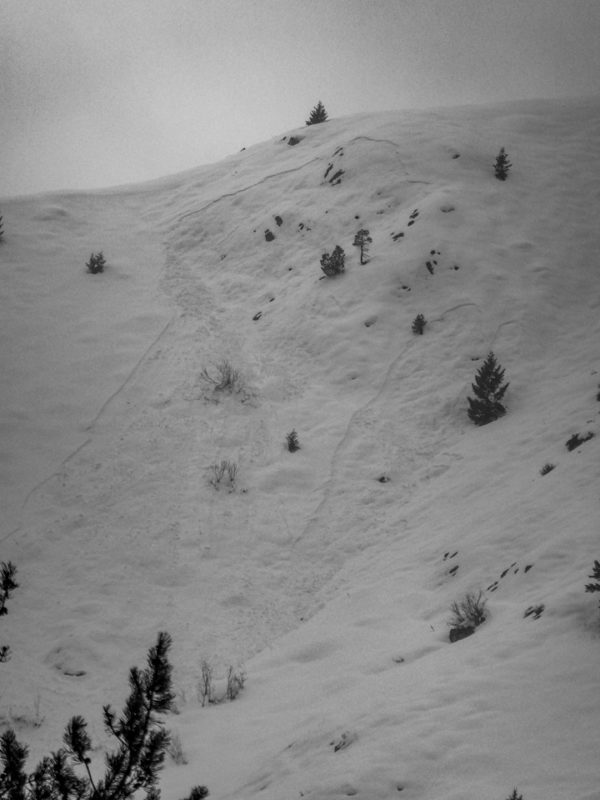Basic Information
Observation Details
Observation Date:
January 21, 2021Submitted:
January 21, 2021Observer:
SAC - Davis, SavageZone or Region:
Sawtooth and Western Smoky MtnsLocation:
Couch Summit, Fleck Summit, S. Fork Boise River (All aspects, 5,500-6,500')Signs of Unstable Snow
Recent Avalanches?
None ObservedCracking?
None ExperiencedCollapsing?
None ExperiencedSnow Stability
Stability Rating:
GoodConfidence in Rating:
ModerateStability Trend:
SteadyBottom Line
We were surprised by the lack of recent natural avalanche activity. We saw only one middle elevation slab avalanche and no slides at low elevation outside of very small wet loose and one thin slab on a road cut.
Overall snow depth is deeper here on S-facing slopes at 6500' than on N-facing slopes at 9,000' in the Wood River Valley. Crusts, crusts everywhere. This area has seen a good amount of snow and rain. The snowpack holds numerous crusts and shows sign of multiple pushes of meltwater deep into the pack.
Media/Attachments

Advanced Information
Weather Summary
Cloud Cover:
Mostly CloudyTemperature:
30 FWind:
Light , NWNew/Recent Snowfall:
HN = ~1 cmBroken skies and intermittent, very light snow showers.
Avalanche Observations
| # | Date | Location | Size | Type | Bed Sfc | Depth | Trigger | Comments | Photo |
|---|---|---|---|---|---|---|---|---|---|
| 2 |
S. Fork Boise E 6500 |
D1 | SS | I-New/Old Interface | This small slab avalanche appears to have failed on the new/old interface during or shortly after the storm on January 13th. We checked out the failure layer of another, similar small slab which ran just above a weak crust. |

|
The lack of low elevation slides was surprising. We had decent visibility in the S. Fork drainage and from Fleck summit up to elevations around 8,500' and saw no avalanches that broke deeper than the new/old interface. Not to say they aren't out there..
Snowpack Observations
The height of snow near Fleck summit is around 70-80 cm at 6,400'. Baldy (Wood River Valley) is showing a height of snow of 60 cm at 9,000'.
A stout rain crust was present at all elevations below 6,500' (our high point) although it was faceting a little in the valley bottom. The (12/11) weak layer was a solid mass of K hard ice on southerly slopes. It has consolidated a bit on E facing slopes but still presented as a 10 cm thick layer of 2 mm F facets which produced propagating results.


Avalanche Problems
| Problem | Location | Distribution | Sensitivity | Size | Comments |
|---|---|---|---|---|---|
 Persistent Slab
Persistent Slab
|
|
Weak Layer(s):
Dec 11, 2020 (FCsf)
Comments: ECTP20, ECTP21. Not likely a problem on W-S-SE. Rose is shaded where problem was observed. |
Terrain Use
We closed off-trail riding in avalanche path runouts and start zones. We stuck to this plan, although avalanches in low elevations were probably unlikely.
